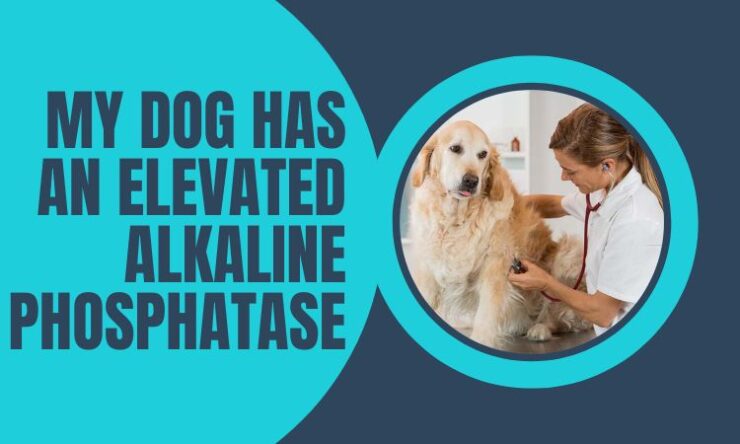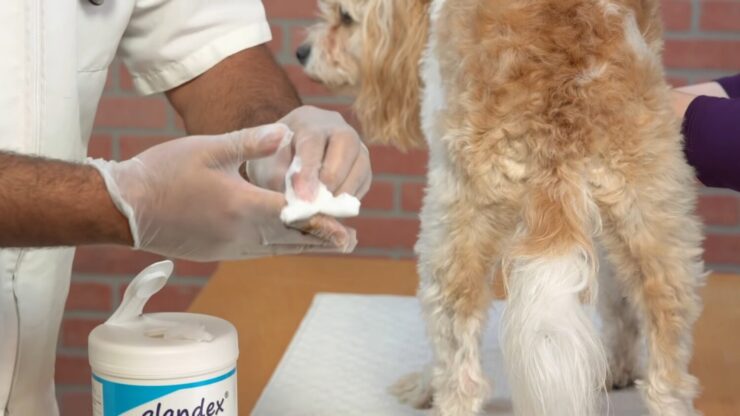There are several liver enzymes that veterinarians will check on a routine basis. The two most common liver enzymes checked are called ALT (alanine aminotransferase) and ALP (alkaline phosphatase).
These enzymes come from different places in the liver, so the level of concern your veterinarian will have for your dog will vary depending on which enzyme is elevated and to what degree.
ALT should be tucked inside of the liver cell. When it comes out into the blood at higher than normal levels, this indicates that something is irritating the liver cell membrane, allowing the enzyme to leak out of the cell.
Vets become concerned when this enzyme gets too high because it means that something is irritating or damaging the liver.
There are a variety of reasons this enzyme can go up: infection, inflammation, toxin ingestion, a tumor and copper storage disease are all on veterinarians’ “rule-out” lists.
Copper storage disease is a condition in which the body traps copper in the liver.
A normal range for this enzyme is around 18–120 U/L (normal ranges vary by lab) and mild elevation in this enzyme is not uncommon, especially in older animals.
Every veterinarian has a different comfort level for when to worry about this enzyme. For me, I start to get more concerned when the reading goes above 200.
ALP comes from a totally different spot in the liver, and changes in this liver enzyme typically cause less concern for veterinarians.
(ALP also comes from the bone, so this enzyme is not liver-specific. For the scope of this article, however, we will discuss ALP made by the liver).
This enzyme is made on the liver cell membrane, and there are a variety of factors that can stimulate the liver to make more of this enzyme.
The normal range for this enzyme is 5–160 U/L. For me, I start to get more concerned when this enzyme goes above 500.
It is common to see this enzyme become very elevated in dogs that are otherwise acting normally.
I have some patients that have an ALP in the 1,000–2,000 range and clinically appear healthy.
There are a variety of reasons that the liver will make more ALP enzyme. One common reason is that the aging liver will sometimes develop benign areas of liver growth called nodular hyperplasia.
(You have probably heard that your ears and nose keep growing as you get older – so too will your liver grow new cells over time.) If there are more liver cells to make more of this enzyme, then the ALP will increase.
Another common reason for an older animal to have an elevated ALP is if they have Cushing’s disease.
Cushing’s disease (hyperadrenocorticism) is where the adrenal glands are producing more hormones than they should. These adrenal hormones influence the liver and turn on the production of ALP.
Certain medications can also turn on production of ALP. One of the most notable medications that does this is a seizure medication called phenobarbital.
Phenobarbital can benignly cause an elevated ALP, but this medication can also cause liver damage.
Because of this, it is common for veterinarians to want to do more testing on the liver if a dog has an elevated ALP and is taking phenobarbital so she can differentiate between a benign and toxic liver change.
It is not always a benign reason that the ALP is up. For example, the ALP will also go up in dogs if there is a gallbladder or bile problem, or a tumor in the liver.
Interpreting liver enzyme elevation is where the “Art of Medicine” comes in and the practitioner must take in the big picture of the pet and the desires of the client. If the pet is clinically normal, then monitoring may be recommended.
If the pet is acting sick (drinking more, not eating, vomiting, panting or otherwise seeming unwell), or the client wants more information, then the practitioner may recommend further testing, like a liver ultrasound.











